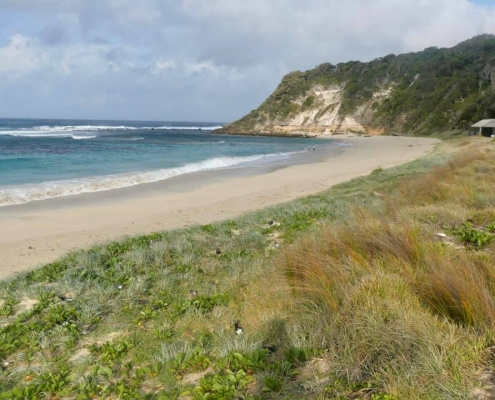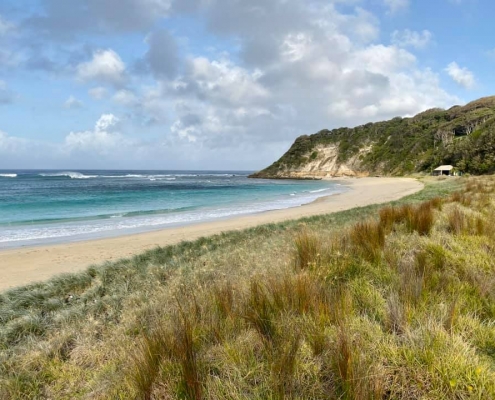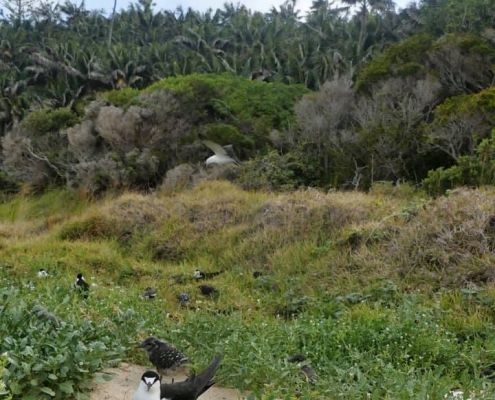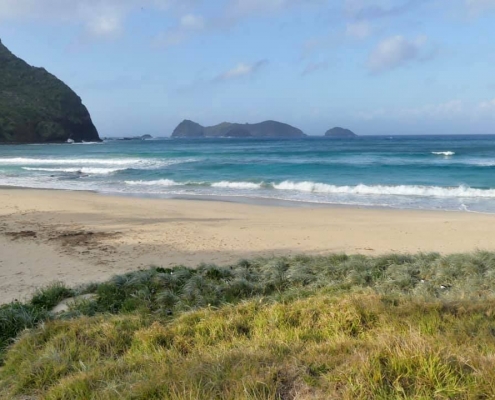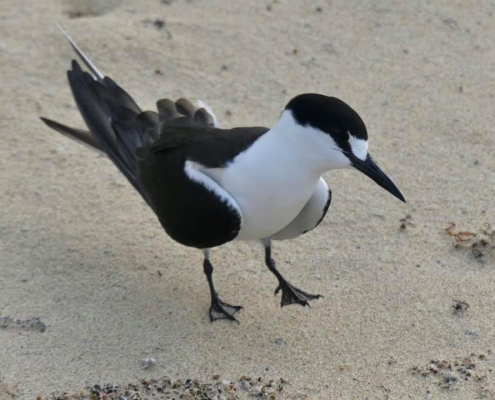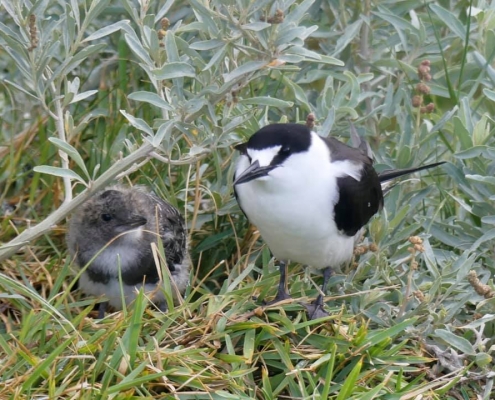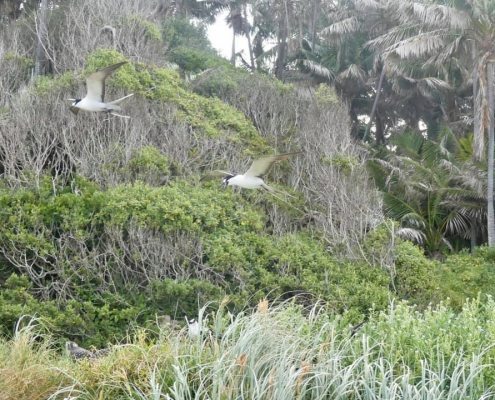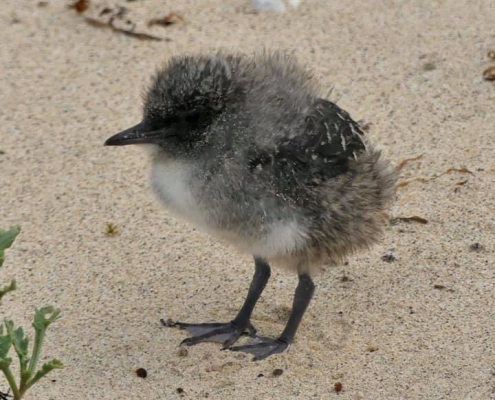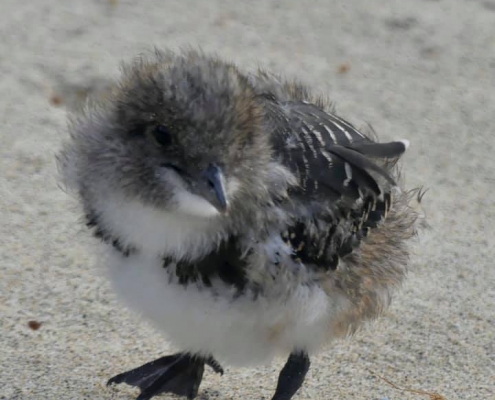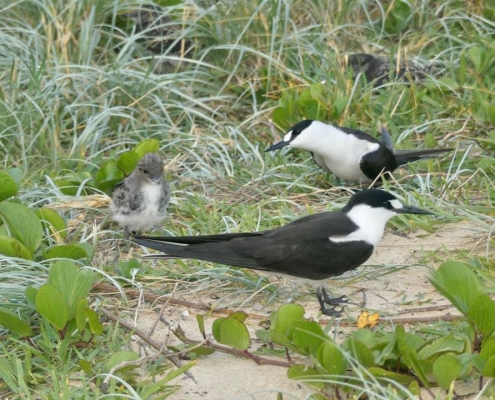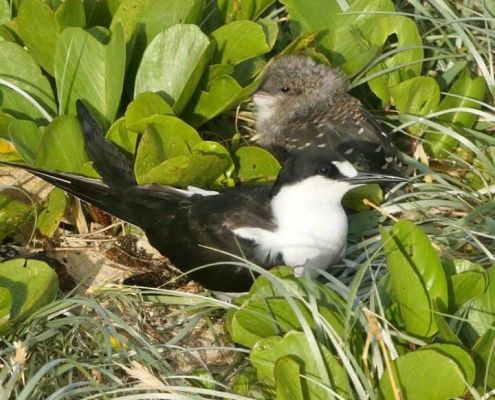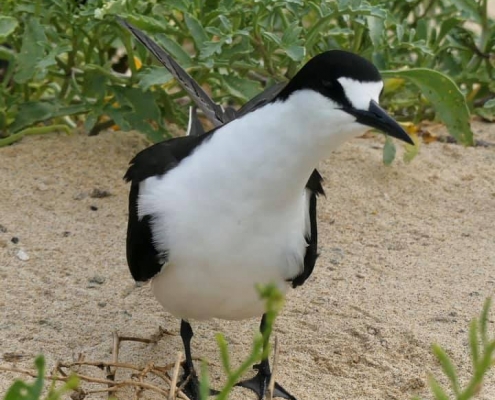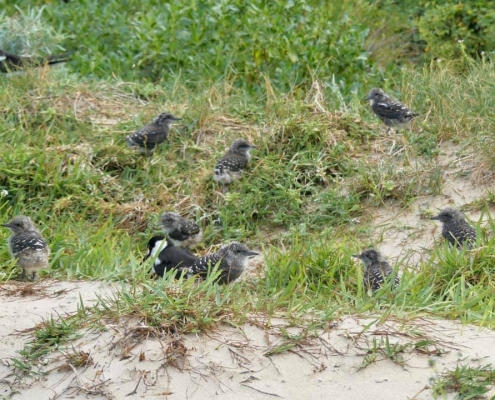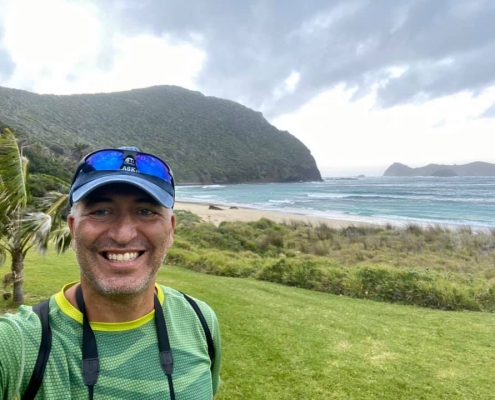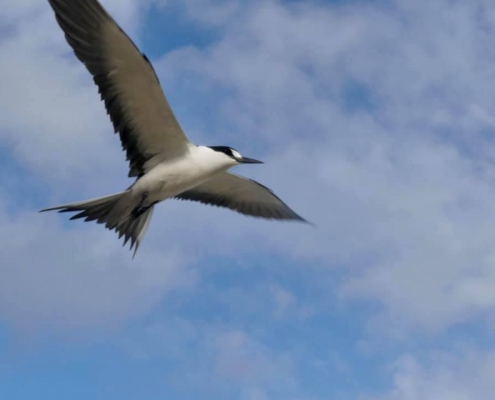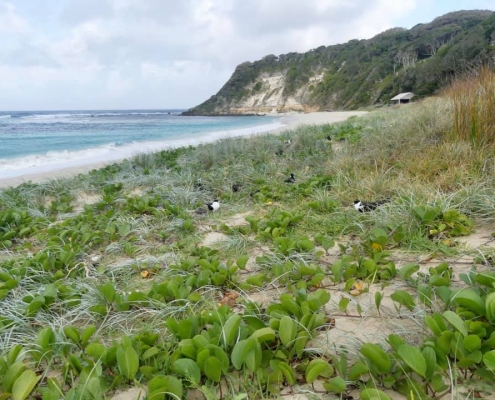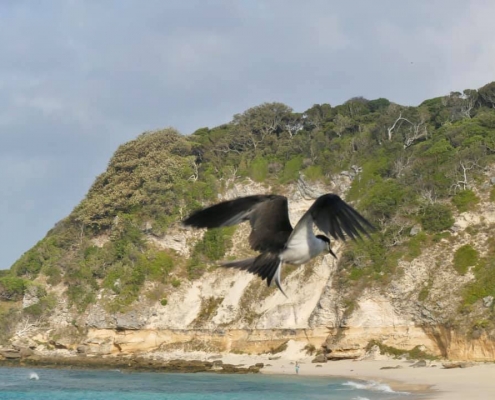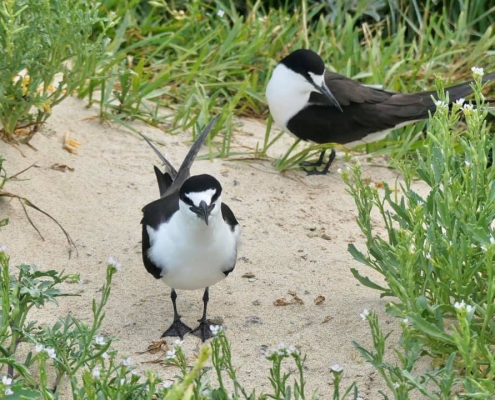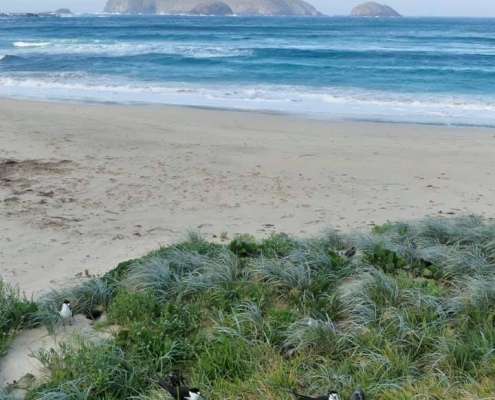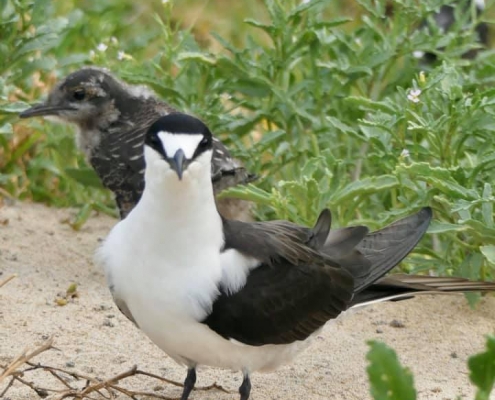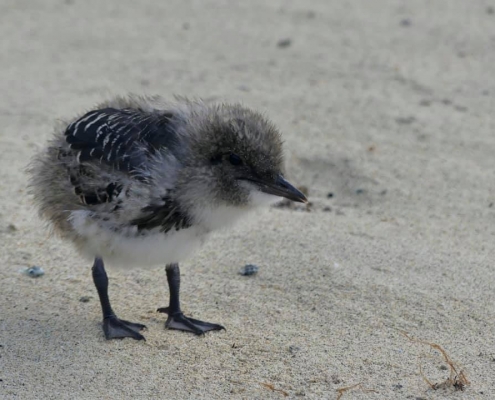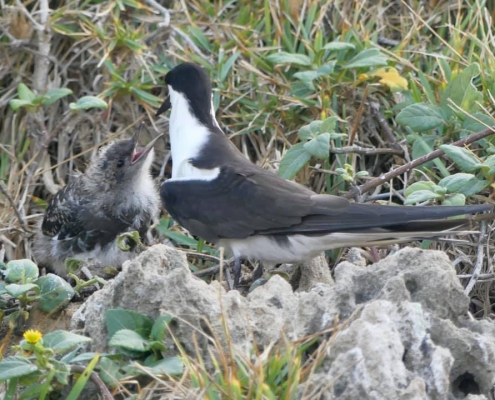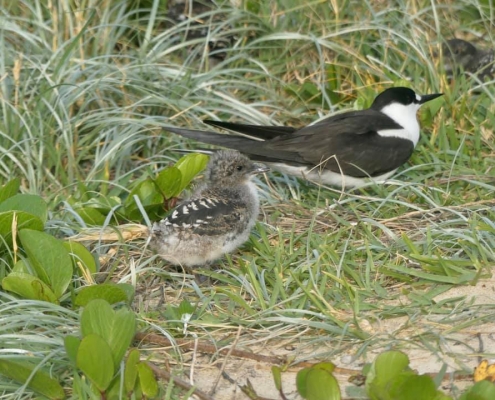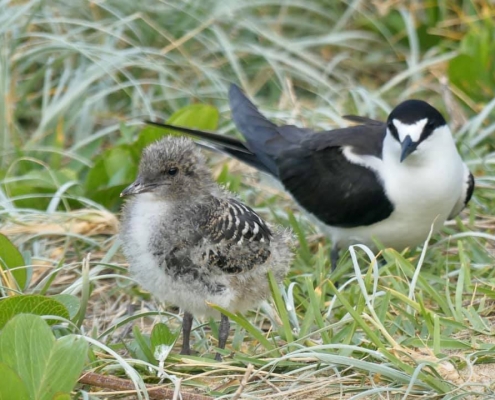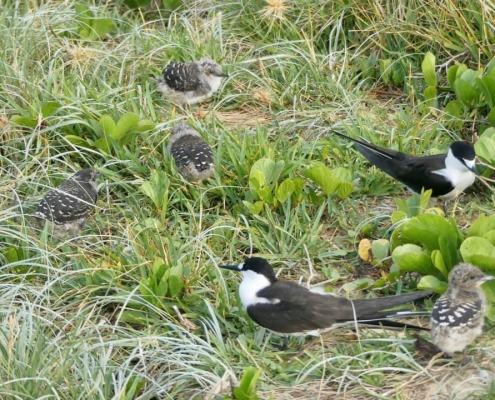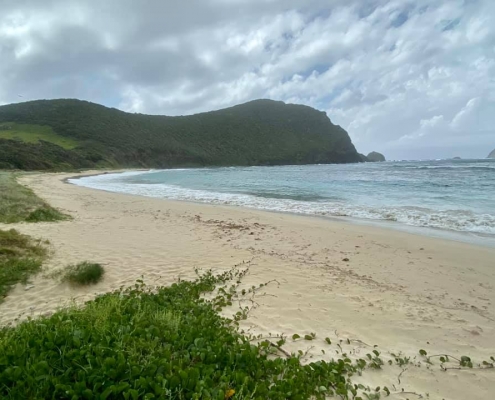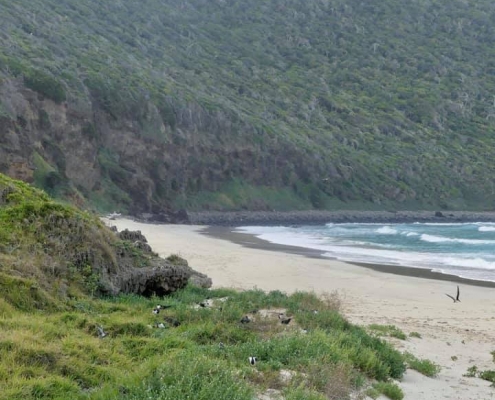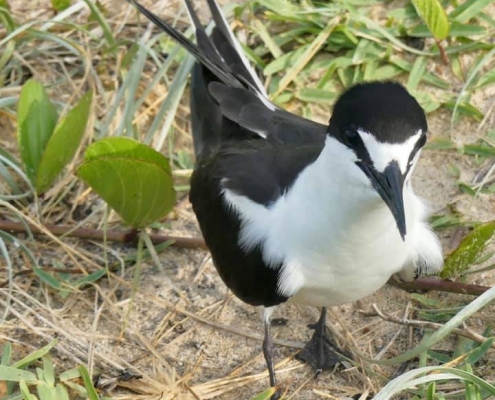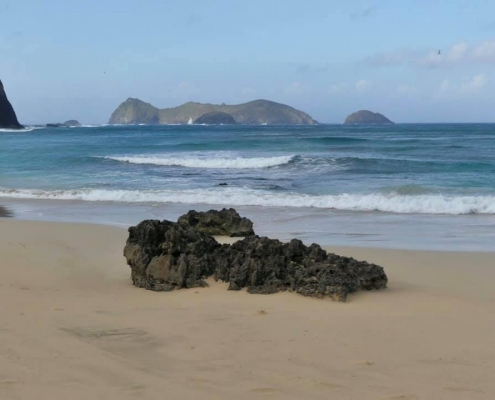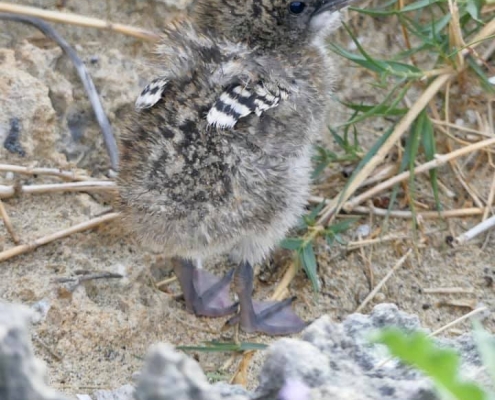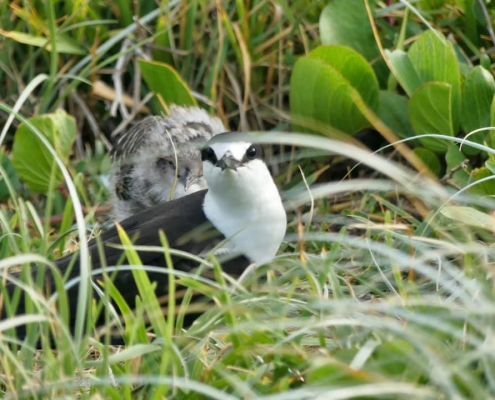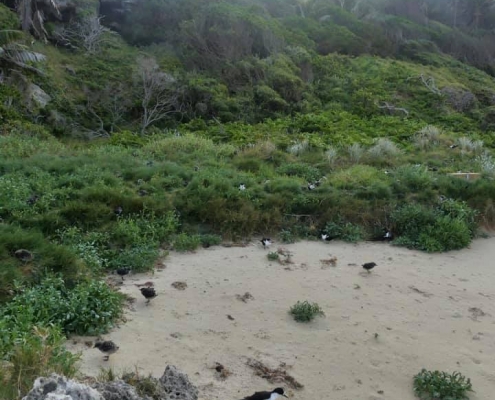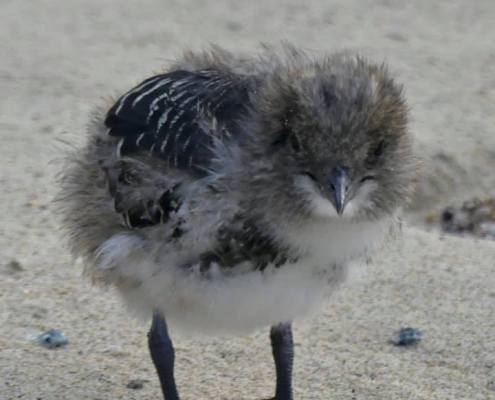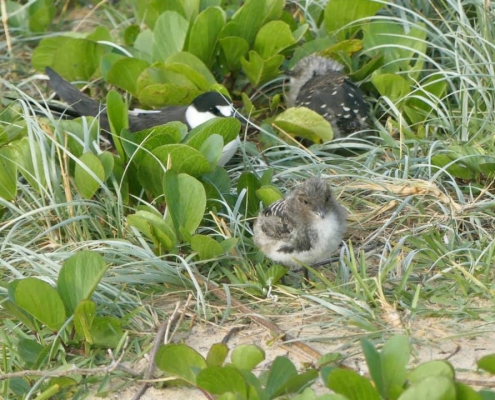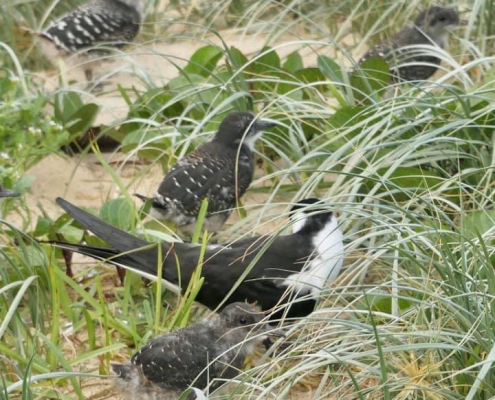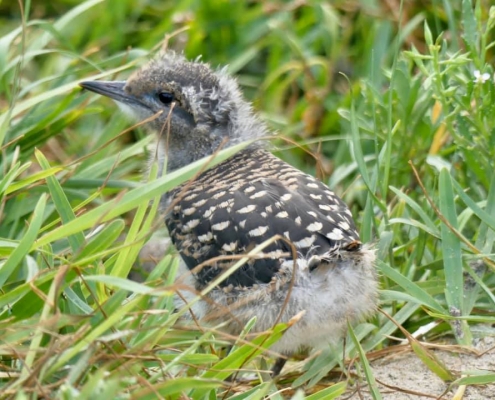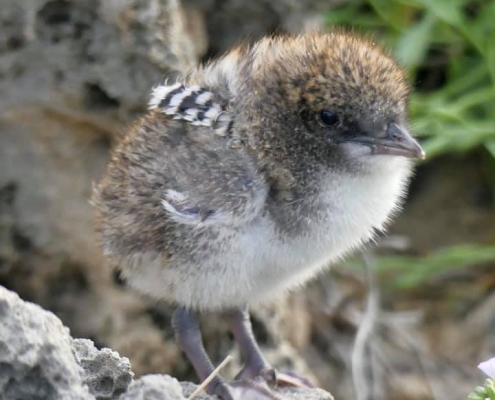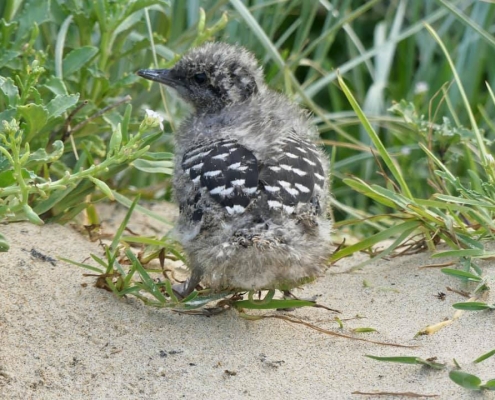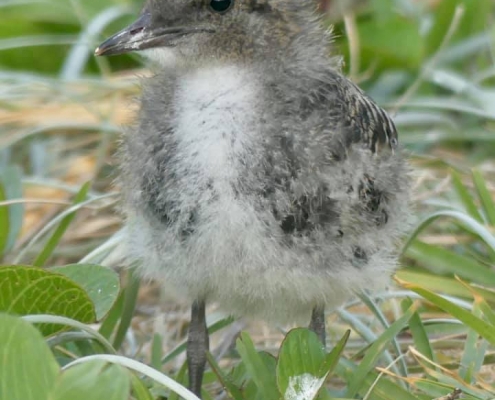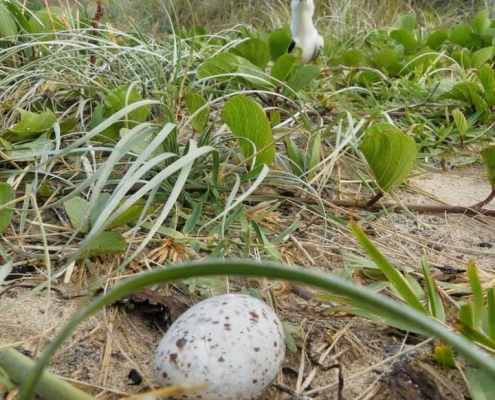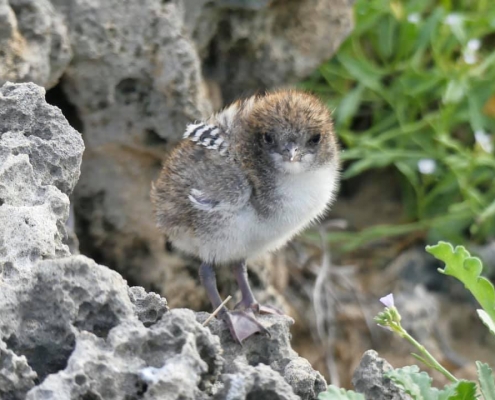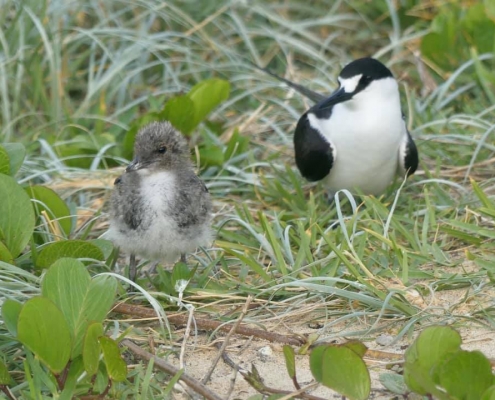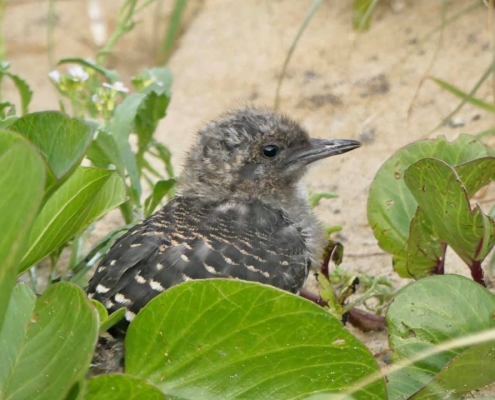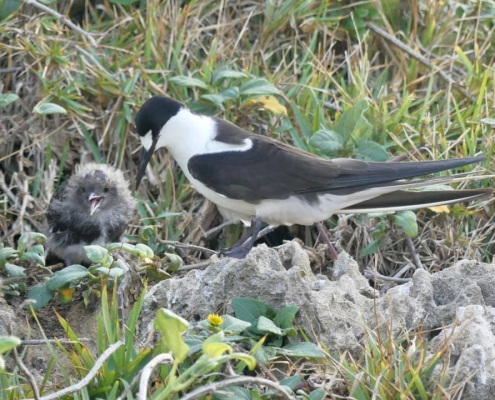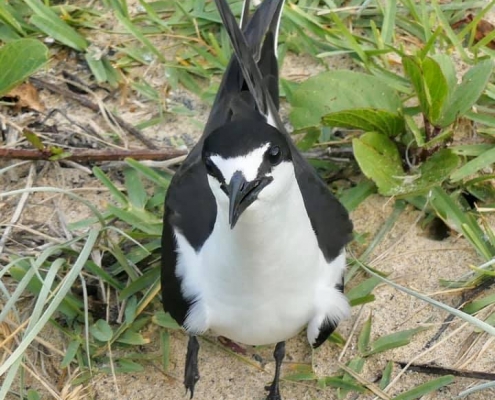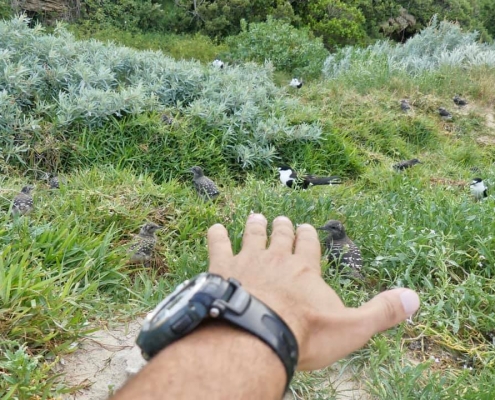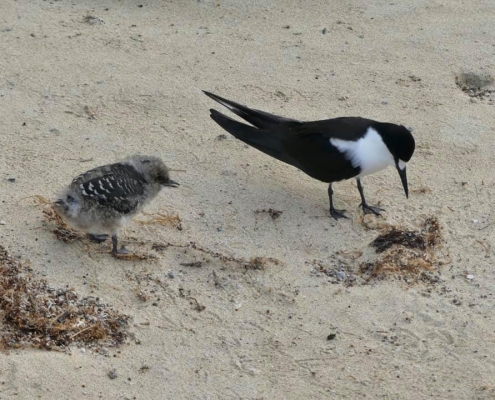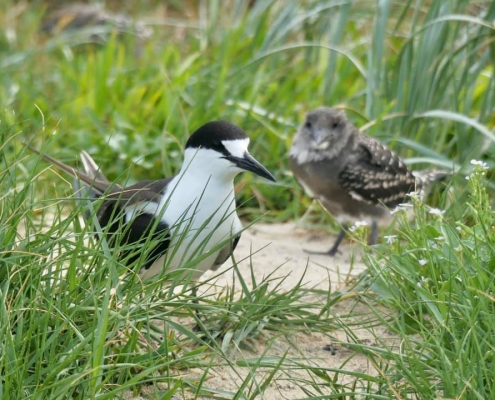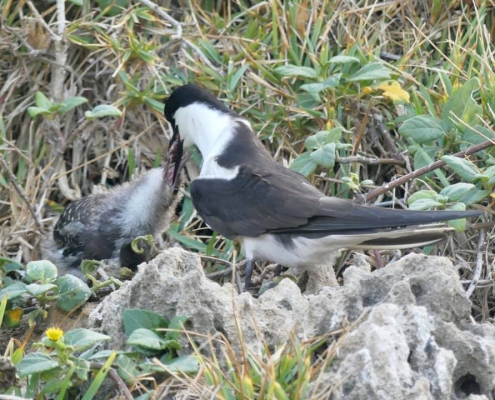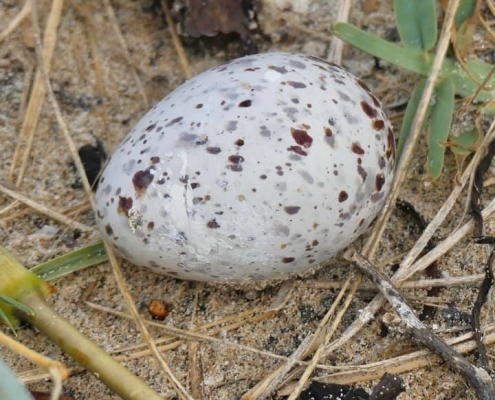Lord Howe Island: Sooty Terns on Ned’s Beach
Lord Howe is a remote island in the middle of the Pacific with no land predators. It is washed up by warm tropical currents half the year and cold southern currents for another half – and it’s a total paradise of birds with species variety like not many other places on the planet. The most abundant species and the first I encountered were sooty terns at Neds Beach. Sooty terns is one of the most common and prolific tropical birds across the whole equator zone and the tropics. It was the famous biologist Karl Linneaus who first described them, they were considers god-like on Easter Island, they were the ultimate delicacy on Marquesas Islands, Hawaiians called them ewa ewa for their loud noise, and Polynesian sailors encountered and followed these birds all around the Pacific on their journeys. On Lord Howe Islands, about 100,000 of them come to reproduce and right now babies are between 3-5 days and a couple weeks old! Sooty terns mate for life, only one egg is laid, and parents take turns at sea for several days collecting food for their baby. They lay eggs on the shoreline in the grass or sand and so they only breed on remote and inaccessible islands. The colonies are very large and very very loud. In fact, the English nickname of the bird is wideawake, as they seemingly never sleep. Sooty terns can spend up to 3 years without ever returning to land, and days even without landing – they can sleep while flying. You can approach them quite close, but at some points the birds get agitated and start screaming or flying at you in a scare tactic. A totally awesome wildlife experience!

